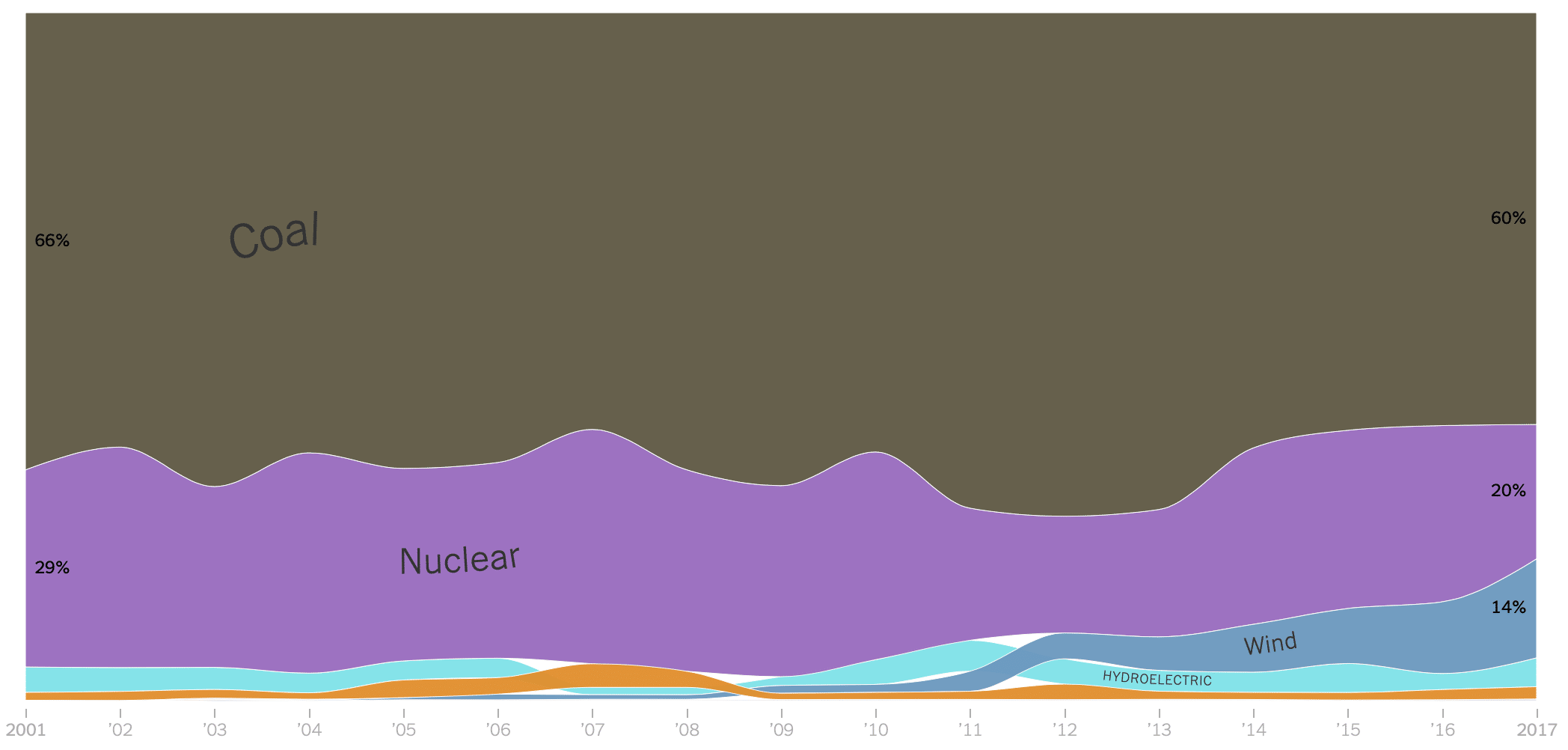If anybody reading is a lifelong procrastinator, there’s one feeling you know well: that deep, motivational, pit of dread that opens in your stomach when it’s finally time to take action on that thing you should have done forever ago. It’s as inspiring as it is terrifying to finish that paper assigned at the start of the semester 30 minutes before the final, or to figure out what’s been rattling in your dash since 2017.
For Nebraska, this sudden onset motivation is coming in the form of solar procurement, as Directors within the Omaha Public Power District have voted 7-1 to add between 400 and 600 MWs of utility-scale solar capacity to OPPD’s energy portfolio.
You may be thinking to yourself “Well that sure is a lot, but we see 400-600 MW procurements all the time. It’s a big deal, but isn’t this hype excessive.” You’d be right, too, we see states and utilities add this much solar all the time. However all of those past states and utilities had onw thing in common: more than 28 MW of solar installed within their borders/service areas to date.
That’s right, a utility within a state which has a total installed capacity less than half the size of the average utility project in Florida has voted to increase the state’s capacity by up to 2,000%.
Cleaning up Nebraska’s energy mix
The new solar procurement is not just exciting, it’s sorely needed. In 2018, the New York Times released How Does Your State Make Electricity, and in-depth look at the energy profiles of all 50 states, broken down as a chart, from 2001-2017.

When we look at Nebraska, we see one thing in abundance – coal – and another not at all – solar, as I’m sure you already determined. In comparison to coal’s 60%, nuclear’s 20% and even wind’s 14%, solar’s role in the generation mix is less than insignificant. SEIA estimates that solar makes up 0.08% of Nebraska’s energy makeup.
The above is what makes this procurement decision so interesting. The state is has decided to increase it’s solar capacity 2,000%, and yet that will represent less than 2% of all generation.
And, before we get too excited, the procurement is not entirely solar. The approved proposal also includes natural gas backup for the solar generation, which the utility shares is “to support accreditation and resiliency requirements, as well as the modernization of some of OPPD’s other natural gas assets.”
Decided before approval
Another noteworthy aspect of the procurement is that it isn’t a request for proposals, which would lead one to believe that the state already has specific projects in mind to fulfill the capacity. This theory has legs, as two potential projects in the Cornhusker State made waves this year.
The first of these Midwest monsters is 423 MW solar plant just outside of Norfolk, set to be developed by NextEra. Not much has been heard of this project since it applied for interconnection earlier this year, but that doesn’t mean it’s dead, just in the seemingly eternal limbo of development. Slightly smaller in capacity but no less impressive is Ranger Power’s plan to construct a 230 MW, $230 million solar plant on 100 acres on either side of Highway 34, just east of Lincoln.
As I’m sure you’ve already figured, if these projects were to be approved, their combined capacity would be in that 600 MW ballpark, though admittedly they would clock in 53 MW over. Is it likely that this procurement announcement was not made to be filled immediately by this two prior project proposals, but we haven’t dusted off our tinfoil hats in a minute.
Regardless of how many projects this procurement comes from, it’s huge news, made even bigger because of just how unexpected it was.
This content is protected by copyright and may not be reused. If you want to cooperate with us and would like to reuse some of our content, please contact: editors@pv-magazine.com.









By submitting this form you agree to pv magazine using your data for the purposes of publishing your comment.
Your personal data will only be disclosed or otherwise transmitted to third parties for the purposes of spam filtering or if this is necessary for technical maintenance of the website. Any other transfer to third parties will not take place unless this is justified on the basis of applicable data protection regulations or if pv magazine is legally obliged to do so.
You may revoke this consent at any time with effect for the future, in which case your personal data will be deleted immediately. Otherwise, your data will be deleted if pv magazine has processed your request or the purpose of data storage is fulfilled.
Further information on data privacy can be found in our Data Protection Policy.